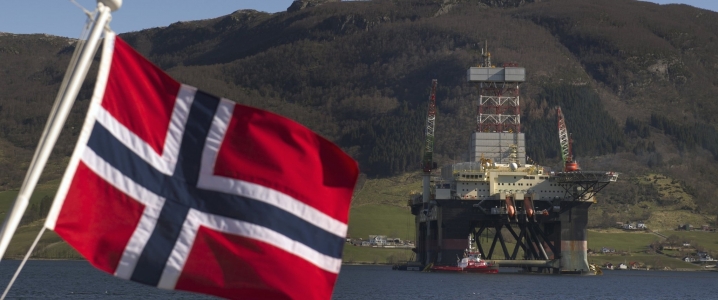Sales of most fuels in Norway declined last year for the first time in almost a decade, after seven years with three-digit annual increases in EV sales. As of March, electric vehicles made up 37 percent of new car sales. And all this was made possible by a government that decided to go all-in on electric cars, providing buyers with generous subsidies and tax breaks to stimulate adoption.
From 2025 onwards, this government wants all new cars sold in Norway to be electric. Against the background of this target, EV adoption is actually going more slowly than it should, despite all the incentives. There are just seven years left until that date and almost two-thirds of cars on Norway’s roads are non-electric. But let’s say adoption will continue to increase at the current rate, and that by 2025 zero ICE cars will be sold in Norway. Will this reduce the country’s carbon footprint? Will the grid cope?
Norway has a very good reputation in green circles, not just because of electric cars but because of its genuine efforts to fight climate change with all means available to it. Among those efforts is a population of just 5.4 million, which automatically means a smaller carbon footprint than more populous neighbors. It also has lots of rivers, which means access to hydropower capacity that others don’t have. In the meantime, Norway is a major exporter of oil and gas.
Norway’s oil production is even on the rise, after a decline in the first decade of the new millennium—and plans are to keep oil production growing. After all, oil exports account for 15 percent of its GDP, and although this figure is not as high as it is in oil-dependent economies, it is still substantial enough to motivate measures to hike production. Related: OPEC Sends Oil Prices Crashing
Domestic oil consumption has also been growing, along with the increases in EV sales. It grew consistently from 2009 until 2016, when it slid down a little. This is decidedly strange given how much of oil demand is actually fuel demand. The Norway demand trend suggests that even generous incentives including free parking, almost no taxes, and no toll charges are not enough to wean everyone off gas-guzzlers; not even most.
As energy expert Robert Rapier puts it in a story for Forbes, “If Norway tells us anything, it's that even rapid EV growth isn't going to lead to peak demand as quickly as proponents think. It isn't even clear that peak demand is yet occurring in Norway.”
This, however, may be actually good in light of grid challenges. Electric vehicles may be emission free once they hit the road, but they need to charge, and the more of them there are to charge, the greater the strain on the grid—any grid.
Last year, EVObsession carried a story in which it quoted a Norwegian grid employee as saying the grid has been pushed to its limits thanks to the fast growth in EV sales.
“Today we balance on a knifes edge in several locations. When people install 22 kW chargers to charge their Tesla in outlying areas, it can be a heavy burden on our local network. In case of large voltage variations, it can even result in light flashing in people’s homes,” Bjørn Brattelid said. Related: Oil Slides As Saudis, Russia Consider 1 Million Bpd Output Boost
This February, Clean Technica quoted Norway’s energy operator Statnett as saying: “The power grid will probably cope, because even though the number of electric cars increase, electricity consumption is increasing at a slower rate. Even when all cars run on electricity, it will only increase electricity consumption in Norway by about 6%, and if charging is done intelligently, the load at peak will only rise a few percent.”
The key here is “if charging is done intelligently”. Experiments aiming to see how disciplined people can be in order to reap more benefits from this or that technology have had disappointing results, so intelligent charging remains an open question. The “probably” is also a red flag. Probably does not mean certainly, and with the grid it’s good to be certain. Yet there is time to adjust the grid for the all-EV fleet of the future. Oil revenues from higher production will surely help.
By Irina Slav for Oilprice.com
More Top Reads From Oilprice.com:
- Will The U.S. Push Venezuela Into The Abyss?
- Iran Tensions Send Oil Spiking Again
- Can Angola Overcome Its Oil Production Decline?


















